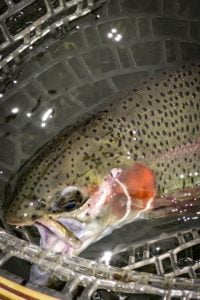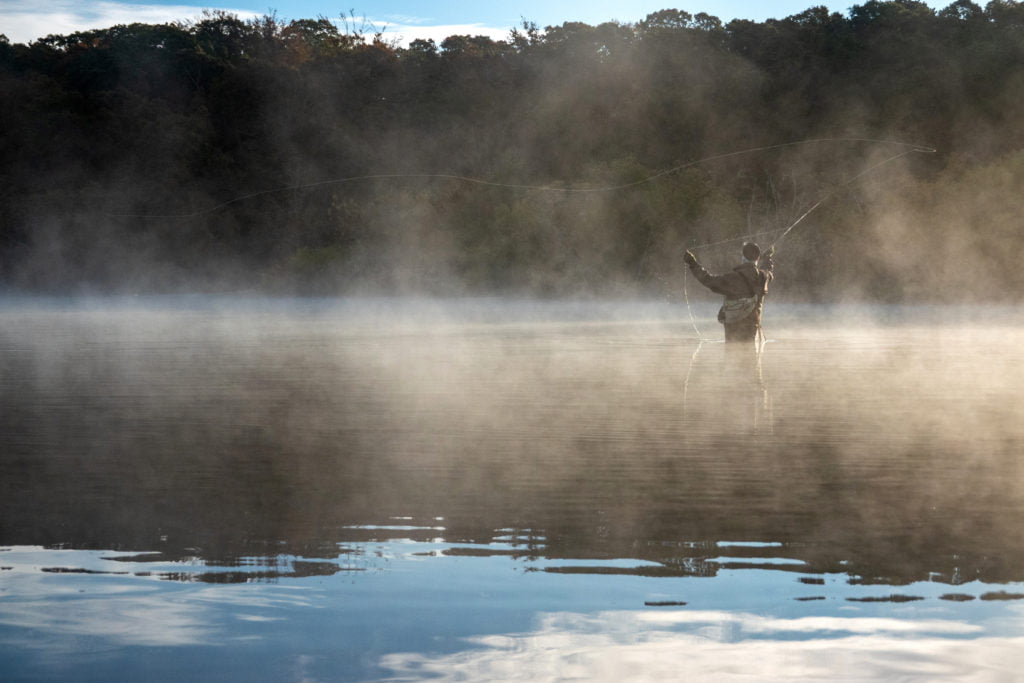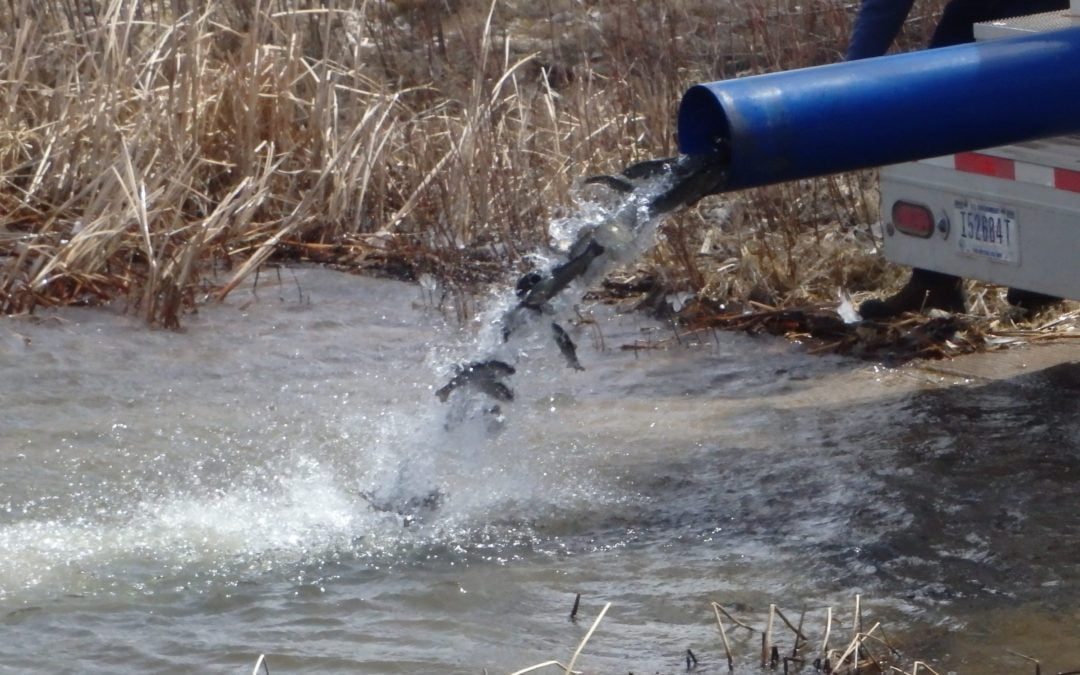 By James Joiner
By James Joiner
Somewhere past the half-way mark of every Cape Cod winter the day comes where anglers collectively – often subconsciously – decree it time to return to more temperate habits. Rods and reels are assembled. Piles of flies crusted together under the guise of forgotten winter organizational projects get separated into trash and not. Waders are timidly tested in private to see if the past few month’s overindulgences caused any shrinkage. Group texts circulate as fairer-weather friends shake off social cobwebs and perform a loose headcount.
The snow is usually gone, ground sucking with mud, ice receded enough for returning osprey to find food. While Cape Cod is surrounded by ocean, it’s not salt water that rouses us from winter’s hibernatorial distractions. No, this is a time to look inward, toward the 996 ponds haphazardly scattered across our 90-mile man-made island. Left behind by the last ice age, these freshwater ‘kettle holes’ range in size from ‘damn, that’s a lot of water’ to “even ___ could cast across it” and, once the truck trout* arrive, they’re filled to the gills with ego-floatingly easy to catch stocked fish.
Growing up, we’d start checking freshwater beaches for the telltale tire tracks of tanker trucks backing in as soon as the sand stopped being hard enough to skateboard on. In modern times, the only legwork involved in figuring out when and where freshly delivered fish can be found is checking the state’s stocking report website, which gives up dates, locations, and fish type. I’m certain there are more adventurous souls who dislike such convenience, but personally I find it motivates me more than driving from pond to pond peering for signs of life. I prefer to save my audaciousness for bigger game, such as the striper migration’s arrival, only a month or two away at this point.

Notably naïve, stocked fish are easier prey than their more seasoned counterparts who wisely remain in deeper water while Powerbait and Woolie Buggers rain from the sky and thin the newly arrived herd. Growing up in a concrete tank with constant food and zero competition doesn’t do much to prepare these truck trout for Darwinian survival in the wild, a fact appreciated and taken advantage of by the army of local anglers, conventional and otherwise, who descend upon them. I like to imagine my own catch-and-release practice to be a crash course in pond-level street smarts, trading cheap thrills for sore lips and a life lesson in looking before you eat.
Regardless, it’s a great and time-honored way to get the casting arm back. It also helps keep my aging fingers nimble enough to tie knots while on the water, far more rewarding than doing so drunkenly in front of a Seinfeld marathon. Admittedly many of the bait fishermen, hidden behind their thick hedges of rods balanced on forked sticks and in PVC pipes, do bear an uncanny resemblance to certain eccentric cast members.
Even as barbless hooks train truck trout to survive in the wild, the admittedly easy hunt for them reignites an angling obsession that can be hard to maintain through New England’s long, dark, hermit-like winters. Sure, I keep up on blogs and magazines and, when I can, take a trip or two to try my luck in warmer climes. But truck trout are the pre-season training that get the mind and body ready for the rigors of striper season. Early mornings, late nights, missed meetings, estranged families – these become the norm as summer wears on through fall and single-mindedness drives us repeatedly to the sea in search of schoolies and larger. It’s a compulsion that will drive you crazy, though often just as you’re about to lose your last wit the season ends, the ocean once again grey, cold, and devoid of life until next year. Yeah, some of us drag it out long into the winter, but as weeks stretch into months without a sign of anything but frostbite the fire subsides and normal life returns, if only for a little while.
*Thanks @fish_fiends for the turn of phrase.



